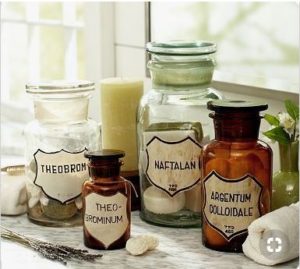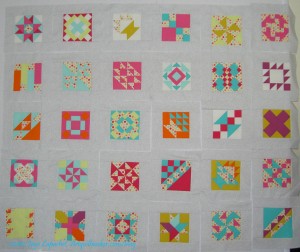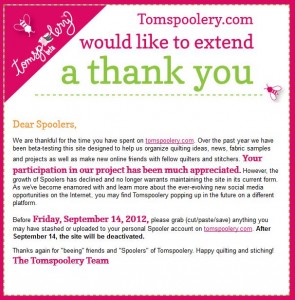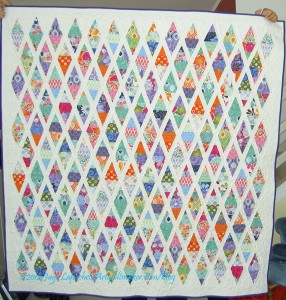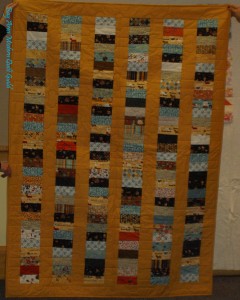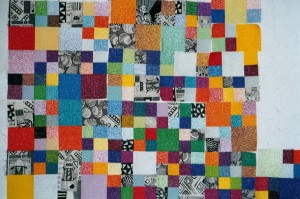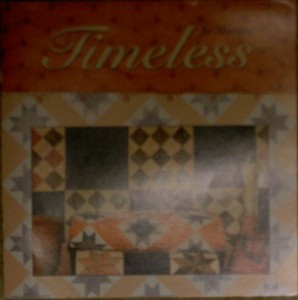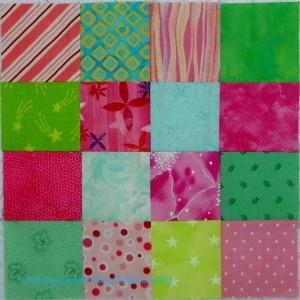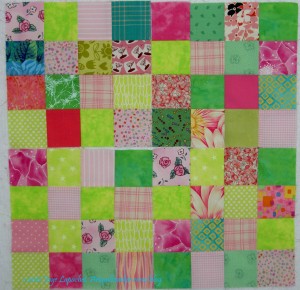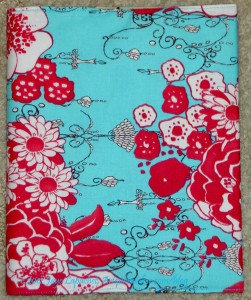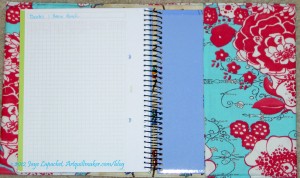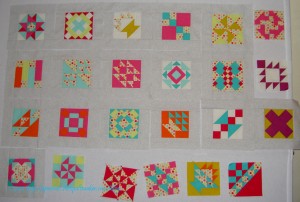Sandy and I were doing so well while she was on sabbatical getting the Design series podcasts to you regularly. The last one we recorded together was Texture. Then this summer, she and I have been like two virtual ships passing in the virtual night –all summer long. I was seriously thinking of recording something myself and sending her an audio file, but the technology aspects were significant enough for me to easily put it off. Finally, Sandy and I both had a spare minute at the same time, earlier this week, and were able to spend some time podcasting.
With Shape we are starting, what I think of as, some of the more advanced concepts. Will I ever learn not to leave the hard ones until last?
Probably not.
I have no doubt that you can all understand, especially with the fabulous foundation of design you have from the previous episodes and all the details we have discussed. 😉 Be sure to listen to the podcast, Episode 103. Below are the notes I used on the podcast.
Design tip: I just read somewhere that the Elements of Design are sometimes called the Sensory Properties, because the viewer can see and touch them with their senses. This is great for remembering which are the elements and which are the principles.
Shape is an Element of Design
Definitions:
- The word shape is “used to refer to a two-dimensional shape…a flat area.” (The Quilter’s Book of Design, 2d, pg.58)
- A shape is defined as an area that stands out from the space next to or around it due to a defined or implied boundary, or because of differences of value, color, or texture. (Visual Literacy: http://www.educ.kent.edu/community/vlo/design/elements/shape/index.html)
- ” A shape is a visually perceived area.” The “edges are defined by a color value, pattern, or texture…” (The Quilter’s Book of Design, 2d, pg.58)
- “…the external outline of an object. It is two-dimensional. ” (Artline Elements of Design: http://coolschool.k12.or.us/courses/115100/welcome/elements1.html)
- Shapes “are made up of closed contours… Shapes are used to convey meaning and organize information.” (About.com: http://webdesign.about.com/od/webdesignbasics/p/aashape.htm)
Understanding Shape
-
- A shape is formed when a line encloses an area.
- Shape is “defined by the lines forming its perimeter. Shapes are not three dimensional. They have no depth and cast no shadow. Shapes are two dimensional entities created by contrasts with their surroundings. They can contain color, value and texture as well as other elements of design.” (A Fiber Artist’s Guide to Color & Design, pg.85)
- Shapes can also be defined by a color or value changes defining the outer edge.” (Pentak & Lauer, pg.136)
- Shapes are used to convey meaning and organize information. (Design Element Shape: http://msfrankel.com/design_principles/elements/presentations/shape.pdf)
- Shapes are flat and can express length and width. (Kidspace Art: http://new.4-hcurriculum.org/projects/kidspace/E-P.htm)
- “Design, or composition, is basically the arrangement of shapes.” (Pentak & Lauer, pg.136)
- Shapes define figure/ground relationships. (Visual Literacy: http://www.educ.kent.edu/community/vlo/design/elements/shape/index.html)
- There are various ways to categorize form and shape. Form and shape can be thought of as either two dimensional or three dimensional. Two dimensional shapes have width and height. Shapes can also create the illusion of three dimension objects. Three dimensional forms have depth as well as width and height. (Art Design & Visual Thinking http://char.txa.cornell.edu/language/element/form/form.htm)
- Volume and Mass: Shape is considered to be a two-dimensional element, which has no volume or mass. Three-dimensional elements (form) have volume and/or mass. A painting has shapes, while a sculpture has volume and mass. (Skaalid, http://www.usask.ca/education/coursework/skaalid/theory/cgdt/shape.htm), (Pentak & Lauer, pg.138) “Volume and mass refer to the three-dimensional shapes of sculpture and architecture. Even though quilts have dimension in the relief created by quilting and embellishment, they are usually considered two-dimensional because the angle of viewing doesn’t critically change the image.” (The Quilter’s Book of Design, 2d, pg.58)
- Example: “paintings have shapes while sculptures have masses.” (Pentak & Lauer, pg.138)
Types of Shapes
Some books say there are only three types of shapes. I found up to five in various sources. Therefore we will use the following types of shapes:
-
- Geometric shapes
- “…include, but are not limited to, circles, squares, rectangles, triangles, stars & diamonds. These types of shapes make up the bulk of the designs in traditional quilt making. They are used alone or together to create blocks and a repetition of design or patterned repeats on the surface of a quilt.” (A Fiber Artist’s Guide to Color & Design, pg.85)
- “Geometric shapes are what most people think of when they think of shapes. ” (Design Element Shape: http://msfrankel.com/design_principles/elements/presentations/shape.pdf)Other common geometric shapes you see…are:
- parallelogram
- cube
- pentagon
- cylinder
- Realistic shapes
- “…replicate shapes found in [our lives] nature. These shapes actually exist and can be copied or recreated. Flowers, leaves, mountains, people, a pair of shoes and rocks in a riverbed are all realistic shapes.” These types of shapes are used quite often in applique’. (A Fiber Artist’s Guide to Color & Design, pg.85)
- Check out Laura Kemshall’s DesignTV video where the main focus is the pair of red shoes. The shoes are a realistic shape. You can find the video in the Free Shows link on DesignTV. It is called Sketchbook Secrets – Using Photocopies Part 1. You will enjoy it.
- “…replicate shapes found in [our lives] nature. These shapes actually exist and can be copied or recreated. Flowers, leaves, mountains, people, a pair of shoes and rocks in a riverbed are all realistic shapes.” These types of shapes are used quite often in applique’. (A Fiber Artist’s Guide to Color & Design, pg.85)
- Organic shapes (AKA Natural shapes)
- “…are usually taken from nature but are less consistent than realistic shapes and offer more variation.” The following all have shapes that can be used as design elements.
- clouds
- flowing water
- puddles
- spills
- Organic shapes call be linked to both the realistic and the abstract. (A Fiber Artist’s Guide to Color & Design, pg.85)
- Example: Minor Miracle by Jane Sassaman is an example of organic shapes (Adventures in Design, pg.31)
- Abstract shapes
- “Abstraction of shapes implies a simplification of natural shapes to their essential, basic character. Details are ignored as the shapes are reduced to their simplest terms.” (Pentak & Lauer, pg.144)
- “Abstract shapes are those that have a recognizable form but are not “real” in the same way that natural shapes are. For example, a stick-figure drawing of a dog is an abstract dog shape, but another dog in a photo is a natural shape. Abstract shapes in Web designs are usually added through images. Some examples of abstract shapes are:
- alphabet glyphs (an alphabet glyph is a an element of writing: an individual mark on a written medium that contributes to the meaning of what is written.)
- icons (a pictogram used in a graphical user interface, from Wikipedia)
- symbols” (About.com: http://webdesign.about.com/od/webdesignbasics/p/aashape.htm)
- “Abstract shapes do not fall into the geometric category and are usually an exaggeration or simplification of natural shapes. With these shapes realism goes out the window and improvisation takes over.” (A Fiber Artist’s Guide to Color & Design, pg.85)
- Example: a landscape stitched together using blocks and strips of color to imply a landscape. “We know that landscapes are not filled with squares, rectangles and strips, but when placed together in the right position with the right colors a landscape can be implied. Art” quiltmakers often rely heavily on abstract design and shape. (A Fiber Artist’s Guide to Color & Design, pg.85)
- Abstract shapes are “simplified or transformed from the real object. The amount of abstraction can range from slight to extreme.” “A transformed shape can be used to provoke a response in the viewer and to emphasize elements in the subject.” (The Quilter’s Book of Design, 2d, pg.59)
- Example: stick figure
- An example of an abstract and a realistic shape side by side is the New Yorker magazine cover from November 23, 1992. (Note: click on the link, you will be asked for a username and password, but close the box and you can still see the cover without logging in or paying. If you want to read the article, you have to pay. You can also go to the Library and request to see the issue)
- Non-objective shapes
- “…shapes not found in geometry or nature. These are non-realistic. They are similar to abstract shapes, but they lack any relation to a real idea or object. Free style piecing often features non-objective shapes.” (A Fiber Artist’s Guide to Color & Design, pg.85)
- “Non-objective shapes are frequently used when the subject of a work is a concept, such as the relationship of colors or an emotion.” (The Quilter’s Book of Design, 2d, pg.59)
- Example is a quilt called Two Trunks, by Ann Johnston, 2004.
Properties of Shape
- Size – “scale the shape you choose to enhance the meaning of your quilt design. Size alone can give emphasis to a shape in a design.” (The Quilter’s Book of Design, 2d, pg.60)
- Proportion – “…the size of a shape in relationship to other shapes in the same design.” Making shapes “much larger and out of proportion to other figures is unexpected and adds significance to their position in the design.” “If the scale of a shape is exaggerated by the artist, it may command attention.” (The Quilter’s Book of Design, 2d, pg.61)
- Example: If you have a giant figure on your quilt and the houses, cars and animals are all much smaller, this use of proportion tells the viewer that the figure is the most important part.
- Example: if you make a medallion quilt with a Mariner’s Compass or star (like Sandy’s Stonehenge piece) in the middle, the star becomes the most important part, because it is the largest. It doesn’t mean we shouldn’t look at the other parts of the quilt, but larger, generally,=more important.
- Placement – “use placement of shapes for three-dimensional effects in a design.” (The Quilter’s Book of Design, 2d, pg.62) This does not mean you are making a 3D object, just that you are creating that effect using shapes. For example, “[i]f shapes are overlapped, one appears to be in front of the other, giving a sense of depth.” (The Quilter’s Book of Design, 2d, pg.62).
- “…we automatically view the bottom of a composition as the foreground and the top of a composition as the background.” (The Quilter’s Book of Design, 2d, pg.62)
- “The placement of shapes can direct and control where the viewer’s eye is first attracted, where it travels next , and where it ends. (Art + Quilt: Design Principles and Creativity Exercise, pg.28)
Psychology of shapes
- circle = protective or infinite, also eternity, connection, community, wholeness, endurance, movement, safety, perfection, power, energy, integrity, completeness, home, restriction; refers to the feminine: warmth, comfort, sensuality, and love, wholeness and unity (Design Element Shape: http://msfrankel.com/design_principles/elements/presentations/shape.pdf)
- square = stability, equality, solidity, security, rationality and honesty (Design Element Shape: http://msfrankel.com/design_principles/elements/presentations/shape.pdf)
- triangle = tension or conflict or action, also energy, power, balance, law, science, religion. Refers to the masculine, strength, aggression, dynamic movement, self-discovery, and revelation. (Design Element Shape: http://msfrankel.com/design_principles/elements/presentations/shape.pdf)
- spiral = expressions of creativity, process of growth and evolution. (Design Element Shape: http://msfrankel.com/design_principles/elements/presentations/shape.pdf)
Use of Shapes in Design:
- add interest to a design
- sustain interest
- organize or separate elements
- direct the eye through the design
- Example: the ribbons of Flying Geese in Caryl Bryer Fallert’s work
- “Shapes can be arranged in space in many ways – rows, overlapping, by size to show distance.” (Artline: http://coolschool.k12.or.us/courses/115100/welcome/elements1.html)
Using Shape to achieve balance: (Pentak & Lauer, 5th, pg.88)
- Shapes can be equal in size and density to achieve balance, but a larger more simple shape can also be balanced by smaller, more complex shape. Imagine a rectangle inside a rectangle on the left and splat or blob inside a rectangle on the right. The splat is more complex, thus, even though smaller, it can balance the simpler shape.
Source: potterybarn.com via Samantha on Pinterest
The photo above shows four jars. The brown jars are smaller. They are also denser than than the larger jars which seems to achieve the balance. The candle helps with the balance by mimicking the shape of the jars and making an odd number of shapes .
The Shape vs. Form Conundrum
A shape is also sometimes “called a form. The two terms are generally synonymous and are often used interchangeably. ‘Shape’ is a more precise term because form has other meanings in art. For example, ‘form’ may be used in a broad sense to described the total visual organization of a work, including color, texture and composition. Thus, to avoid confusion,” and because we are going to use form in a different way for our purposes, “the term ‘shape’ is more specific.” (Pentak & Lauer, pg.136)Notes:
-
-
- “Pictures certainly exist without color, without any significant textural interest, and even without line, but rarely do they exist without shape.”
- Example: modern paintings that are just splatters of paint. The splatters/droplets have a shape
- “A flat work, such as a painting” or a quilt, “can be viewed satisfactorily from only a limited number of angles, and offers approximately the same image from each angle, but three dimensional works can be viewed from countless angles as [the viewer] moves around them.” (Pentak & Lauer, pg.138)
- Negative Space is the area that surrounds the shapes. (Artline Elements of Design: http://coolschool.k12.or.us/courses/115100/welcome/elements1.html)
- The placement of one shape – a positive figure or foreground – creates another, a negative figure or background. The placement of a shape organizes the empty space around it into more shapes. (The Quilter’s Book of Design, 2d, pg.62)
- Shapes can vary endlessly and can suggest physical form and direct eye movement. (Visual Literacy: http://www.educ.kent.edu/community/vlo/design/elements/shape/index.html)
- Simple shapes are remembered and understood more easily than complex shapes. (Visual Literacy: http://www.educ.kent.edu/community/vlo/design/elements/shape/index.html)
- Shapes serve many purposes in visual images. Value, texture, and color help us see different shapes. (Visual Literacy: http://www.educ.kent.edu/community/vlo/design/elements/shape/index.html)
- “Unless we are working whole-cloth, we textile artists must cut out shapes to create our work. The placement of shapes can direct and control where the viewer’s eye is first attracted, where it travels next , and where it ends. (Art + Quilt: Design Principles and Creativity Exercise, pg.28)
- “Pictures certainly exist without color, without any significant textural interest, and even without line, but rarely do they exist without shape.”
-
Here is your mystery to ponder: “which came first line or shape?” Kind of like the chicken and the egg. (The Quilter’s Book of Design, 2d, pg.58)
Resources:
-
- A Fiber Artist’s Guide to Color & Design, Heather Thomas
- About.com page on web design: http://webdesign.about.com/od/webdesignbasics/p/aashape.htm
- Adventures in Design by Joen Wolfrom
- Art + Quilt: Design Principles and Creativity Exercises, Lyric Kinard
- Artline Elements of Design: http://coolschool.k12.or.us/courses/115100/welcome/elements1.html
- Design Basics, 5th, c.1999, David A. Lauer, Stephen Pentak
- Design Element Shape: http://msfrankel.com/design_principles/elements/presentations/shape.pdf
- Incredibleart.org: http://www.princetonol.com/groups/iad/files/elements.htm via Exploring Visual Design: The Elements and Principles, Joseph Gatto, Albert Porter, Jack Selleck. Davis Publications. 2000.
- Kidspace Art: http://new.4-hcurriculum.org/projects/kidspace/E-P.htm), Adapted from A Palette of Fun with Arts and Crafts, a 4-H CCS publication
- The Quilter’s Book of Design, 2d, Ann Johnston.
- Visual Literacy: http://www.educ.kent.edu/community/vlo/design/elements/shape/index.html
- Bonnie Skaalid, Web Design for Instruction: Classic Graphic Design Theory: Elements of Design: Shape http://www.usask.ca/education/coursework/skaalid/theory/cgdt/shape.htm
- “…are usually taken from nature but are less consistent than realistic shapes and offer more variation.” The following all have shapes that can be used as design elements.
- Geometric shapes
